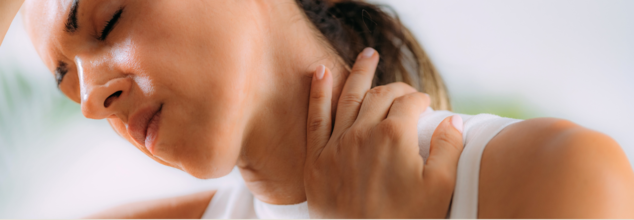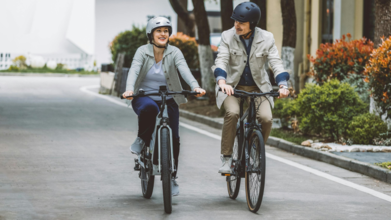- Health Conditions A-Z
- Health & Wellness
- Nutrition
- Fitness
- Health News
- Ayurveda
- Videos
- Medicine A-Z
- Parenting
- Web Stories
10 Effective Strategies To Maximize Muscle Recovery

10 Effective Strategies To Maximize Muscle Recovery
When it comes to achieving fitness goals, most individuals focus on the intensity and consistency of their workout routines. However, muscle recovery is equally critical to progress, ensuring the body repairs itself, builds strength, and prevents long-term injuries. Contrary to what some fitness blogs might suggest, optimal recovery isn't about expensive supplements or extreme methods-it's about prioritizing basic, proven strategies like proper nutrition, rest, and hydration.
Recovery is a vital component of any fitness regime, yet many overlook its significance. Here, we dive into 10 effective strategies to optimize muscle recovery and help you reach your fitness goals faster.
Importance of Recovery
Recovery allows your muscles and tissues to repair, rebuild, and grow stronger after being stressed during physical activity. This is especially vital following weightlifting or intense workouts, where muscles are broken down to be rebuilt stronger. Recovery also prevents overtraining and reduces the risk of injury, which can set your fitness journey back significantly. Unfortunately, many individuals lack a structured post-workout recovery plan, leaving muscles prone to soreness, fatigue, and prolonged recovery periods.
Muscle recovery encompasses rest, proper nutrition, hydration, and other restorative practices. Adding recovery strategies into your fitness regimen helps maintain high performance and consistency over the long term. Below are proven recovery methods that can transform your post-workout recovery.
Prioritize Nutritional Recovery
Nutrition is foundational for muscle recovery, as your body requires specific macronutrients to repair damaged tissues and rebuild strength. After a workout, your body is depleted of essential energy stores and nutrients, making refueling imperative. Protein is at the center of recovery because it contains amino acids that repair muscle fibers broken down during exercise.
Protein Intake Post-Workout: After exercise, aim for a protein intake of 1.6 grams per kilogram of body weight to maximize muscle repair. While studies suggest both pre-workout and post-workout protein consumption can support recovery, focusing on daily protein intake is more important. Lean protein sources like chicken, fish, eggs, and plant-based options such as beans or tofu are ideal for supporting tissue repair.
Fluid Replacement: Hydration cannot be overstated when discussing recovery. Sweating during exercise leads to significant water and electrolyte losses, which must be replenished to optimize recovery. Plain water works well for moderate exercise, but for high-intensity or prolonged workouts-especially in hot environments- electrolyte drinks are beneficial. They replenish sodium, potassium, and other vital electrolytes lost through sweat, facilitating proper muscle function and recovery.
Together, focusing on balanced macronutrient consumption and fluid replacement ensures your muscles receive the fuel necessary for repair and rebuilding.
Rest and Relaxation
One of the most effective ways to recover is to give your body adequate time to rest. Many individuals make the mistake of training the same muscle groups multiple days in a row without rest. However, this overtraining can slow recovery and reduce the effectiveness of your workouts.
Sleep is an essential component of rest and recovery. While you sleep, the body releases Growth Hormone (GH), a key hormone responsible for tissue growth and repair. Experts recommend prioritizing 7-9 hours of quality sleep per night to ensure the body performs its natural repair processes optimally. If you struggle to unwind after a workout, try incorporating relaxing methods such as a heated blanket, meditation, or a soothing bedtime routine to support restorative sleep.
Additionally, allowing time for relaxation post-workout- whether by using recovery shoes, lying down, or taking breaks- can help the body shift focus toward repair rather than continuous exertion.
Cold Therapy and Ice Baths
Ice baths and cold therapies have become popular recovery strategies among athletes for their ability to reduce inflammation, alleviate muscle soreness, and promote healing. While cold therapies might not be a pleasant experience, they work by constricting blood vessels, which reduces swelling and inflammation. Moreover, the alternating process of constriction and dilation helps flush out waste products, improving recovery time.
Alternatives like contrast water therapy, which involves switching between hot and cold showers, can also deliver similar benefits without the need for an ice bath. While many athletes find ice baths effective, individual preference and workout intensity may determine their utility. Investing in a cold plunge tub for consistent recovery use could also streamline this process.
Get Adequate Sleep
Sleep does far more than rest the mind; it supports the body’s ability to repair and recover. During sleep, the body restores energy levels, repairs damaged cells, and builds new tissues. Additionally, as mentioned, Growth Hormone is secreted during sleep, which plays a significant role in tissue regeneration and repair.
To ensure optimal recovery, aim for consistent, quality sleep. Try sleeping in a cool, dark room with minimal distractions, and consider using recovery strategies like warming blankets or aromatherapy to make your sleep environment conducive to relaxation and repair.
Avoid Overtraining
Overtraining is one of the most common barriers to effective recovery. While pushing your body during workouts can lead to progress, excessive or overly intense exercise without sufficient recovery days can impair muscle repair and lead to burnout. It’s essential to plan a workout routine that balances intensity with sufficient rest.
The American Council on Exercise (ACE) suggests listening to your body and incorporating rest days into your fitness plan. Recovery periods allow muscles to repair and grow stronger rather than becoming overworked. If your fitness regime relies heavily on resistance or endurance training, schedule rest days strategically to allow specific muscle groups to recover.
Stay Hydrated
Hydration plays a vital role in recovery because water supports every bodily function, including nutrient transportation, waste removal, and tissue repair. Dehydration can impair these essential processes, leading to prolonged muscle soreness and delayed recovery.
It’s important to drink at least 1.5 liters of water for every kilogram of body weight lost during exercise. For those engaging in prolonged or intense activity, especially in hot or humid climates, electrolyte drinks can boost rehydration. Maintaining consistent hydration not only supports recovery but also prevents cramping, fatigue, and other performance-related issues.
Massage for Muscle Healing
Massage has been a trusted recovery method for athletes and fitness enthusiasts alike. Scientific studies show that massage has a small but notable effect on improving flexibility and reducing delayed onset muscle soreness (DOMS) after a strenuous workout.
Massage works by improving blood circulation, reducing inflammation, and promoting nutrient delivery to sore muscles. It can also enhance flexibility, preventing injuries during future training. A post-workout massage—whether through a professional therapist or tools like foam rollers—can accelerate recovery and enhance the overall recovery experience.
Adopt a Balanced Diet
Eating a well-rounded diet ensures that you receive all the nutrients necessary to support recovery. A balanced diet includes healthy proteins, carbohydrates, healthy fats, and essential micronutrients. Lean proteins such as poultry and fish, complex carbohydrates like sweet potatoes and quinoa, and healthy fats such as avocado and olive oil provide the raw energy your body needs for muscle repair.
Additionally, ensure you’re consuming plenty of fruits and vegetables, as they are rich in antioxidants, which combat oxidative stress and inflammation caused by exercise.
Things to Avoid
Lastly, be mindful of substances that can impair recovery. Alcohol and tobacco are known to interfere with the body’s ability to repair damaged tissues. Alcohol impairs sleep quality, reduces protein synthesis, and compromises hydration. Similarly, tobacco contains harmful compounds that can inhibit blood flow, which is vital for transporting nutrients to repairing tissues.
Minimizing these substances in your post-workout recovery strategy can further support your fitness goals and recovery outcomes.
Muscle recovery is about more than simply resting and waiting. It’s a holistic process that combines proper nutrition, hydration, sleep, and recovery practices. Incorporate these 10 strategies into your post-workout routine to ensure optimal recovery and allow your body to rebuild stronger, faster, and more resilient. Prioritize rest, fuel your body with the right foods and hydration, and give yourself the best chance to perform at your peak- every workout, every time.
Dwayne Johnson Unrecognizable New Look Leaves Fans Shocked, How The Rock Dropped 60 Pounds During Weight Loss Transformation

Credits: Venice Film Festival/Instagram
Dwayne “The Rock” Johnson has always been synonymous with strength, charisma, and an iconic muscular frame. But this week, fans barely recognized him. At 53, the actor unveiled a dramatically slimmer look while promoting his latest film, The Smashing Machine, leaving social media buzzing. Dropping an astonishing 60 pounds for his role as MMA champion Mark Kerr, Johnson’s transformation has sparked curiosity, how did one of Hollywood’s most ripped stars achieve such a drastic change and could it really be done safely? From diet tweaks to intense training, this transformation is surely a masterclass in discipline, science, and sheer determination.
From his WWE wrestling days to blockbuster hits like Fast & Furious and Black Adam, his signature look has been about size, strength, and power. But when he stepped onto the red carpet at the 82nd Venice International Film Festival, fans were stunned. Johnson, 53, appeared dramatically slimmer, having shed close to 60 pounds for his role in The Smashing Machine, a biopic about MMA legend Mark Kerr.
Clad in a sharp double-breasted suit and subtle glasses, Johnson looked nearly unrecognizable. Social media lit up with reactions ranging from admiration to disbelief. “The Rock turned into a pebble,” one fan quipped on X, while others speculated whether Hollywood’s latest weight-loss trend—injectables like Ozempic or Mounjaro played a role.
So how did the world’s most famous action star pull off such a radical transformation?
Dwayne Johnson Weight Loss: The Acting Role That Sparked a Transformation
The Smashing Machine, tells the turbulent story of Mark Kerr, a former NCAA wrestling champion; to do justice to Kerr’s complicated journey, Johnson didn’t just rely on prosthetics and wigs. He physically reshaped his body to mirror the leaner, battle-worn frame of an MMA fighter from the late 1990s. Speaking at Venice, Johnson admitted:
“This transformation was something I was really hungry to do. I’ve been fortunate in my career, but there was a little voice inside me that said, ‘What if I could do more?’”
How Did Dwayne Johnson Lost 60 Pounds?
Dropping 60 pounds is not a casual feat, especially for someone with Johnson’s naturally muscular build. It requires precision, planning, and science-backed strategies. Here’s a breakdown of what likely fueled his transformation:
1. A New Approach to Nutrition
Johnson has long been known for his intense, protein-rich “cheat meals” and high-calorie fueling. But slimming down for The Smashing Machine would have meant rethinking everything.
Caloric Deficit: To lose weight, he would have needed to burn more calories than he consumed daily. Reports suggest that his intake was strategically lowered while still supporting performance and energy.
Lean Proteins: While reducing muscle bulk, protein remains essential for muscle maintenance. Sources like grilled fish, egg whites, and lean chicken likely became staples.
Lower Carbs, Smarter Fats: Instead of bulking carbs, Johnson likely shifted toward complex carbs (like sweet potatoes and oats) and healthy fats (avocados, olive oil, nuts).
Hydration and Water Manipulation: A technique Johnson previously described during Black Adam prep. Adjusting water and sodium intake helps achieve a leaner, tighter look.
2. Training Like a Fighter, Not a Bodybuilder
Unlike superheroes or action roles that required maximum size, portraying Kerr demanded a more athletic, fight-ready build. Johnson’s training likely included:
Functional Strength Workouts: More bodyweight exercises, compound lifts, and fight-specific movements rather than sheer heavy lifting.
Cardio Conditioning: Interval training, long sessions of steady-state cardio, and possibly combat drills to replicate an MMA fighter’s stamina.
Mobility & Agility Training: Essential for replicating Kerr’s fighting style and reducing the risk of injury at 53.
Did Dwayne Johnson Use Ozempic or Fat-Loss Injections?
The internet buzzed with speculation about whether Johnson joined the list of celebrities turning to medications like Ozempic or Mounjaro, designed for diabetes but widely used for rapid weight loss.
There’s no confirmation from Johnson himself, and given his history of meticulous training regimens and diet transparency, it seems more plausible that his transformation was the result of strict lifestyle changes rather than pharmaceutical shortcuts.
Still, experts note that rapid and dramatic changes like this are usually only sustainable under professional supervision something Johnson has access to with his longtime trainer, Dave Rienzi.
This isn’t the first time Johnson has dramatically altered his physique for a role. For Black Adam (2022), he revealed how he worked “harder than ever” on dieting and training, manipulating sodium and water retention to achieve a superhero’s shredded frame.
The difference this time? Instead of aiming for mass and density, he trimmed down to reflect vulnerability, endurance, and realism. It’s a striking reminder that body transformations in Hollywood aren’t always about getting bigger—they’re about embodying a character.
Why Are Celebrity Weight Loss Transformations Becoming Popular?
Johnson’s transformation adds fuel to the ongoing discussion about how actors reshape their bodies for roles. Christian Bale, Matthew McConaughey, and Joaquin Phoenix all underwent dramatic shifts for character authenticity. But for Johnson a man defined by his physique it’s particularly startling.
His leaner frame also resonates with broader health conversation and the possible use of weight loss injections to transform into a leaner more "fitter" body. With obesity rates soaring and plant-based diets, intermittent fasting, and medical interventions gaining traction, fans are asking whether their favorite stars are adopting the same tools everyday people use—or something far more extreme.
Fitness Lessons You Can Apply To Your Journey
Dwayne Johnson’s new look may be for a role, but it underscores timeless lessons about health and body transformation:
- Significant weight changes require discipline, nutrition, and tailored exercise.
- Quick fixes, like weight-loss injections, remain controversial and should be supervised by medical professionals.
Even at 53, with the right guidance, it’s possible to reshape your body dramatically though sustainability depends on balance, not extremes.
Johnson has proven once again that his career is about more than action-hero brawn. His latest transformation shows he’s still willing to push physical and emotional limits to tell a story reminding fans that even “The Rock” is capable of change.
Zone Zero Workouts: Why Barely Exercising Could Improve Your Health And Longevity

Credits: Canva
When you hear the word exercise, your mind probably jumps to images of sweat-covered gyms, thudding treadmills, and high-intensity interval training. But what if the most overlooked type of movement—the kind that doesn't really feel like exercise at all—had incredible health benefits? Welcome to "zone zero" exercise, a strategy that flips conventional fitness wisdom on its head.
Zone zero is very low-intensity activity, slower and more relaxed than most fitness trackers would call zone one. It's activity so relaxed that you could talk easily the whole time. It's the opposite of stressing yourself to the limit: a walk around the block, some gentle yoga movement, stretching waiting for your coffee, or even light gardening. Athough it looks simple, zone zero can enhance health indicators, promote mental health, and even provide for longevity.
What are Zone Zero Workouts?
In endurance training, heart rate zones are used to organize workouts. Zone one is generally around 50-60% of your maximum heart rate—a slow, aerobic pace. Zone zero falls even lower, usually just above complete inactivity. Sports scientists argue whether it should be considered its own category, but its idea has drawn attention because it is so accessible and may have benefits.
Zone zero cares less about performance metrics and more about sustainability and consistency. It reminds us that it is better to move, albeit slowly, than to sit. In a world of sedentary lifestyle and intense fitness culture, the slow pace of zone zero provides an alternative, more sustainable way.
Zone Zero: Does Science Support Moving Slowly?
Zone zero advantages go beyond convenience. Research indicates even small amounts of physical activity can increase circulation, stabilize blood sugar, and promote mental health. Slow motion stimulates glucose uptake in muscles after eating, reducing the likelihood of insulin resistance and type 2 diabetes.
Light exercise also accesses fat stores for energy more efficiently than high-intensity workouts, which depend so much on glucose. A leisurely walk, or even standing at work, can slowly lower body fat while improving cardiovascular health.
Recovery is another significant benefit. Intensive training requires rest to rebuild muscles and restore energy. Zone zero offers a restful alternative. It melts stress and tension without draining energy resources, making it suitable for working professionals or family and work-committed individuals.
Mental Health and Consistency
Perhaps the most underappreciated aspect of zone zero is its mental health benefits. Low-intensity activity promotes mindfulness, alleviates stress, and helps regulate mood. It also helps build habits. Individuals are more likely to maintain a practice that is low-stress and feels accomplished, translating to compounded dividends: improved sleep, enhanced life satisfaction, and decreased risk of chronic illness.
Even on stressful days or lazy workdays, zone zero enables one to stay active. Small actions, such as dog walking, standing over a cup of coffee while reading emails, or a leisurely post-lunch walk, can, over time, change the mood, energy, and overall health.
Does Zone Zero Fit in 'Busy' Modern Lifestyle?
For some, fitness guidance can be overwhelming: steps, intensity, frequency. Zone zero makes it easy. It's about incorporating movement into daily life organically. Long periods of sitting are associated with higher health risks, even among people who do vigorous exercise sporadically. Regular, low-key activity can counteract these risks and supplement more intense exercise.
For athletes, zone zero provides a strategic advantage. Scientists have found that faster marathon runners spend much of their race in low-intensity zones, becoming endurance-building without exhausting themselves. Low-intensity movement might help recovery, rebuild heart structure, or prime slow-twitch muscle fibers, all leading to improved performance over time.
Can Anyone Do Zone Zero Exercise?
Zone zero is not reserved for elite athletes or those in their golden years; it can be tailored for anyone. Its greatness is accessibility. No equipment, heart rate monitors, or strict regimens are necessary, unlike traditional training. Anyone can weave gentle movement into the day and gain both acute and chronic health benefits.
Whether it's a retiree wanting to stay mobile, a working professional needing stress relief, or an injury returnee, zone zero provides a low-barrier way to get into regular exercise. Its focus on sustainability ensures movement becomes a lifelong practice and not a temporary commitment.
How to Add Zone Zero Exercise In Your Workout?
Following are practical suggestions for integrating zone zero in everyday life:
Gentle Walking: A leisurely neighborhood walk, short post-meal walks, or walking on the phone.
Easy Yoga or Stretching: Add stretches to your morning and evening routine without exhausting yourself.
Gardening and Yard Work: Light digging, planting, or weeding is low-intensity exercise.
Standing Activities: Employ standing desks or switch between sitting and standing while working.
Household Chores: Cleaning, dusting, or tidying up keeps your body in motion without structured exercise.
Casual Cycling: A slow bike ride at a speed that permits normal conversation.
Active Breaks: Brief, slow walks during work breaks to interrupt extended periods of sitting.
Recreational Hobbies: Light dancing, tai chi, or easy play with children or pets.
Zone zero contradicts conventional notions of how exercise "ought" to be. Its merit is not in intensity but in regularity, accessibility, and accumulation of benefits. Even small, persistent movement can boost circulation, stabilize blood sugar, improve mental well-being, and lead to longevity.
In a culture that values efficiency and peak performance, the idea of flowing slowly may seem contradictory. But growing evidence demonstrates that on occasion the easiest, slowest way is the one most likely to have significant implications for health, fitness, and well-being.
Cardiologist Warns “You Don’t Have One Heart... But 2”: How This ‘Silent’ Second Heart Could Change Your Health

(Credit-Canva)
Our hearts works very hard to make sure we have the energy and strength to do everything we need. However, as gracious our organs are to us, most of us are not as helpful back to it. Whether it is eating junk food, not exercising, sleeping late etc. However, did you know, your heart is not the only one bearing the burden? You also have another heart in your body contributing to your health.
Heart transplant cardiologist Dr. Dmitry Yaranov calls your calf muscles your "second heart" for a very good reason. When you move your legs, these muscles squeeze and relax, which helps push blood back up toward your main heart.
This pumping action is essential for good circulation throughout your body. Without it, blood can pool in your lower legs, making it harder for your heart to work. By keeping your calf muscles strong, you help your body's entire circulatory system run smoothly, which can prevent problems like dangerous blood clots.
How Your ‘Sitting’ Lifestyle Is Killing Your Heart
Our modern lives often involve a lot of sitting, which is a big problem for our calves and our hearts. When we don't use our calf muscles, they weaken and lose their ability to pump blood effectively.
Dr. Yaranov warns that this forces your main heart to work much harder to circulate blood on its own. Over time, this extra strain can cause circulation to slow down, leading to swelling in your legs, high blood pressure, and a much higher risk of heart failure. No pill can replace the natural, powerful benefits of simply moving your body.
Simple Ways to Keep Your Calves Strong
The good news is that you can easily strengthen your calf muscles without a gym. Dr. Yaranov suggests simple changes to your daily routine. Try to walk every day to get your blood flowing.
You can also do calf raises while you're sitting at your desk or waiting in line at the grocery store. Whenever possible, choose to take the stairs instead of the elevator. These small, consistent actions will help keep your "second heart" strong and healthy for life, which in turn protects your main heart.
Calf Exercises You Can Do At Home
Calf Raises
Stand with your feet flat on the ground. Slowly lift your heels as high as you can, balancing on your toes, then lower yourself back down with control. Repeat for several repetitions to build strength.
Single Leg Calf Raise
Stand on one leg, using a chair or wall for balance. Lift your heel as high as possible, then lower it back down slowly. This variation helps improve your balance and builds strength one leg at a time.
Standing Calf Stretch
Stand a few feet from a wall and place your hands on it. Step one foot back and lean forward, keeping your back heel on the floor to feel a deep stretch in your calf. Hold for 30 seconds.
Dumbbell Calf Raise
Hold a dumbbell in each hand. Stand with your feet flat on the ground. Lift your heels and rise up onto your toes. Squeeze your calf muscles at the top before slowly lowering yourself back down.
Seated Calf Raise
Sit on a chair and place your feet flat on the floor. Place a heavy book or a dumbbell on your knees for weight. Lift your heels as high as you can, then slowly lower them for a controlled movement.
© 2024 Bennett, Coleman & Company Limited

